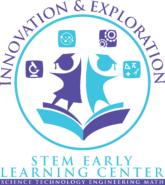Every child learns in their own unique way, and for many, hands-on experiences are the key to better understanding and retention. If your child enjoys building, experimenting, or exploring the world through touch and movement, they may be a kinesthetic learner. STEM-based education is one of the best approaches to support this type of learning.
What is a Hands-On Learner?
A hands-on learner, also known as a kinesthetic learner, absorbs knowledge best through active participation. Instead of just listening to a lesson or reading a book, they grasp concepts by touching, doing, and experimenting.
Signs Your Child is a Hands-On Learner
- They love building things with blocks, Legos, or other materials.
- They prefer science experiments and interactive activities over passive learning.
- They enjoy outdoor play, sports, or creative projects.
- They struggle with sitting still for long periods and learn better when engaged in movement.
How STEM-Based Learning Benefits Hands-On Learners
At Innovation and Exploration STEM Early Learning Center, we design learning experiences that encourage children to engage actively with their environment. Hands-on learning through STEM helps children:
- Develop critical thinking skills by experimenting and problem-solving.
- Retain information longer by experiencing concepts rather than just memorizing them.
- Enhance creativity and curiosity, inspiring them to ask questions and explore solutions.
- Improve collaboration skills by working with peers on projects and experiments.
By embracing hands-on learning, your child can build confidence, enhance their understanding, and develop a passion for discovery that lasts a lifetime. Want to see how we support kinesthetic learners? Explore our STEM programs today!
